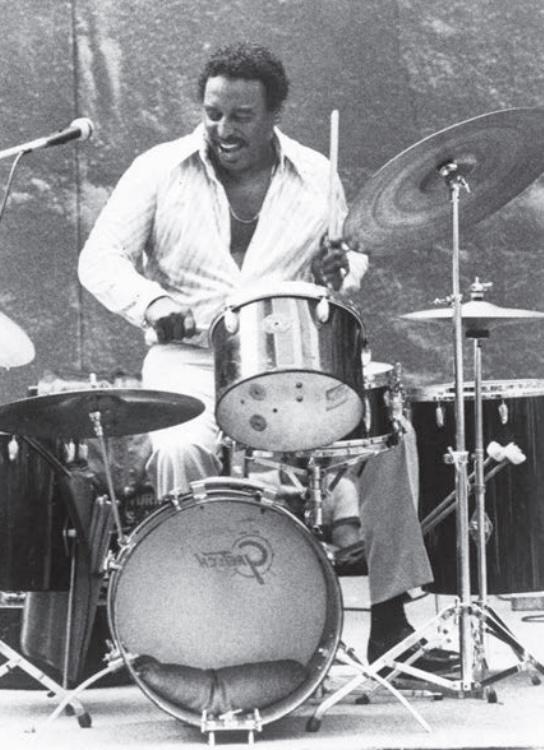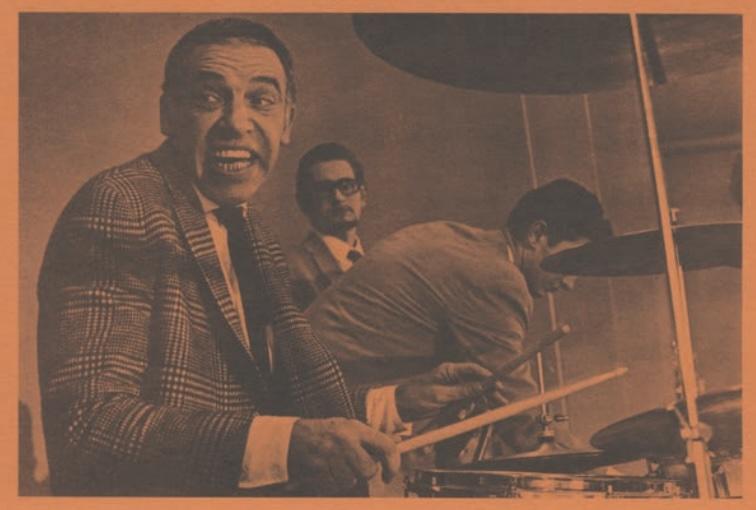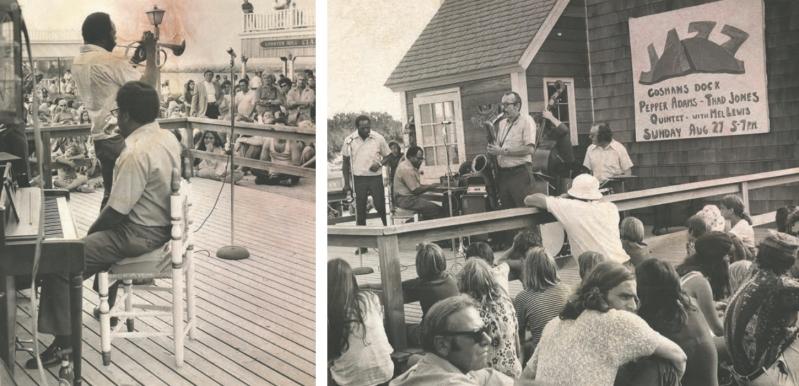MONTAUK, N.Y. — Excitement is building in this hamlet on Long Island’s East End for the first Montauk Jazz Festival, to be held Aug. 3-4. The festival, which aims to further the Montauk Artists Assn.’s efforts to renovate and expand its Montauk Community Arts Center, will also serve as a tribute to legendary bassist Percy Heath.
So reported Billboard magazine in August 2001, ahead of an unforgettable two-day event held at the Montauk internationally for its beautiful beaches and sport and commercial fishing, swells in population during the summer months,” Billboard wrote, “it is a decidedly quiet place after Labor Day. The Community Arts Center is a welcome addition to a year-round community hungry for cultural stimuli.”
The festival also featured the drummer Chico Hamilton and his quintet, the trumpeter Jerry Sokolov and his quintet, the drummer Eddie Locke and his quartet, and a group led by the saxophonist Bob Berg, who lived in East Hampton but died, barely a year later, in an Amagansett traffic accident.
For those old enough to remember, the late-summer celebration in 2001 recalled the memorable (and free) jazz concerts held at Gosman’s Dock starting in 1972. The late John Gosman Sr., an aficionado, took more than a few of the genre’s icons to the waterfront complex for delightful Sunday evening concerts: Toots Thielemans, who lived in Montauk, too, the Heath Brothers, Lee Konitz, Ruth Brown, Dick Hyman, Eddie Daniels, Charlie McPherson, Maxine Sullivan, David “Fathead” Newman; Joe Farrell, and, in 1972, an all-star lineup of Thad Jones, Mel Lewis, Pepper Adams, George Mraz, and Roland Hanna. The blues and R&B singer Helen Humes, who Gosman said “caused quite a stir” when she returned to singing after taking several years off, during which she worked at the Army Ammunition Plant in Charlestown, Ind., also performed, as did the genre-defying Richie Havens in a July 1973 concert that drew several thousand to Gosman’s.
By then, however, jazz had waned as a cultural and commercial force in the United States, rock-and-roll having shoved it aside and stolen the hearts of the record-buying public. In another manifestation of the uneasy coexistence of art and commerce, record labels likewise shifted their focus to platinum-selling rock and pop acts. Jazz splintered — many would say evolved — with some pushing it into the avant-garde, others incorporating elements of rock-and-roll in what is widely called fusion. Many American musicians relocated to Europe, or traveled as far as Japan to find appreciative audiences.

But the adage “what’s old is new again” applies here. In 1980, a 19-year-old trumpeter named Wynton Marsalis toured Europe as a member of Art Blakey’s band, the Jazz Messengers. Soon, he would record his first solo album for Columbia Records and perform with legends including Herbie Hancock, Dizzy Gillespie, Ron Carter, John Lewis, Sonny Rollins, Clark Terry, Sarah Vaughan, and Tony Williams. More than any other musician, Marsalis returned jazz to the spotlight, turning new generations on to the uniquely American art form.
It’s fitting that Marsalis performed, with the Jazz at Lincoln Center Orchestra, at the Southampton Arts Center for the second annual Hamptons JazzFest, in 2022. Now in its fifth year, Hamptons JazzFest delivers another cornucopia of music by some of the genre’s giants at venues across the South Fork including LTV Studios in Wainscott, the Parrish Art Museum in Water Mill, Guild Hall in East Hampton, the Southampton Arts Center, the Hampton Library in Bridgehampton, Second House Museum in Montauk, and The Church, Bay Street Theater, and the Wamponamon Lodge Masonic Temple in Sag Harbor.
“Jazz is such an amazing example of cultures and traditions and history coming together,” says Claes Brondal, executive director of Hamptons JazzFest. “It’s not static, it is constantly evolving, reflecting the world we live in. Jazz musicians, say, 60 years ago, typically knew a specific genre of jazz and would stick to that. Today, they have to be extraordinarily versatile and likely know a lot of things in terms of history, other world cultures, rhythms, harmonies.”
As an organization, “We’re trying to show our community, and younger generations, that jazz is very relevant and very hip,” says Brondal, a Sag Harbor resident who was born in Denmark and studied with Ed Thigpen, one of several American jazz musicians who relocated to Copenhagen in the early 1970s. “We have to make it accessible for people so they can, especially up close and in person, get that connection so they can appreciate it. If you hear it in passing or on television, you are not going to have the personal and emotional connection to it. Energy is an interesting thing — you can’t see it, but you can absolutely feel it. Live music, but especially improvisational music, is highly dependent on a live audience.”
Highlights will be many at the Fifth Hamptons JazzFest, but one will surely be the Harlem Gospel Choir’s return performance, on August 11 at Bay Street Theater, where it will present The Magic of Motown.
The day before, August 10, will see Jazz By the Sea: Montauk Jazz Day at Second House Museum featuring Richard Baratta and the Gotham City Latin/Jazz Quartet — featuring Montauk’s own Bill O’Connell, a giant of Latin jazz, on piano — and the Ada Rovatti Quartet. Ms. Rovatti and her husband, the trumpeter Randy Brecker, live in East Hampton.
In February, Savant Records released Looking Back, Baratta’s collection of classic rock-and-roll and pop songs performed by jazz greats including O’Connell, who also served as arranger, and Paul Bollenback, a guitarist who has also performed at Hamptons JazzFest. You haven’t heard Purple Haze, Whole Lotta Love, Hey Jude, or Respect like this.
O’Connell, who is the festival’s artistic director and performs weekly during the summer at the Montauk restaurant Maverick, released his own Live in Montauk, recorded at Gosman’s Dock during the first Hamptons JazzFest with the saxophonist Craig Handy and a rhythm section comprising Santi Debriano, who will lead his Bembe Arktet on July 18 at The Church in Sag Harbor, and the renowned drummer Billy Hart, who has recorded and performed with the likes of Miles Davis, Shirley Horn, Wes Montgomery, Jimmy Smith, Stan Getz, McCoy Tyner, and Otis Redding, to name just a few.
Also as part of the festival, the McIver Piano Jazz Series will be held at LTV Studios. The series will feature intimate, solo performances and conversation with the pianists Roberta Piket (July 7), Phil Markowitz (July 20), Julius Rodriguez (August 18), and O’Connell (August 25), all at 6 p.m.
Along with Brondal and O’Connell, Joel Chriss and John Landes are indispensable players in the Hamptons JazzFest as director of programming and secretary, respectively.
“To understand one another, to be able to relate to one another, to understand that the culture we live in was not invented yesterday but is the culmination of hundreds of years of cultures coming together to create the American experience, that is truly mind-blowing and super-important for people to know,” said Brondal. “As Americans, you own this experience. It’s part of your heritage.”
“Freedom,” O’Connell observes, “is a big part of jazz, and in this day and age we need freedom. Getting up in the morning and playing the way you feel — we need that outlet more than ever.”
This summer, we’ve got it. A kickoff party happened at the Southampton Arts Center on June 22 with a performance by the Hamptons JazzFest All-Star Ensemble. Now, the festival starts swinging: the Alex Sipiagin Quartet plays at the Masonic Temple on July 6 at 7 p.m. The full schedule is at hamptonsjazzfest.org.


